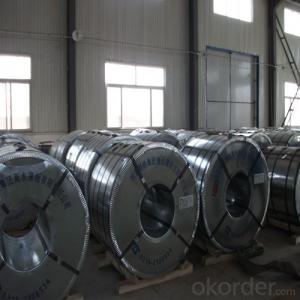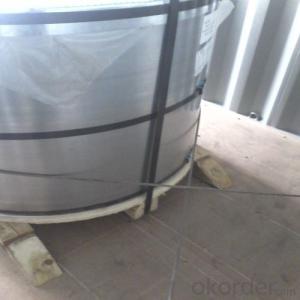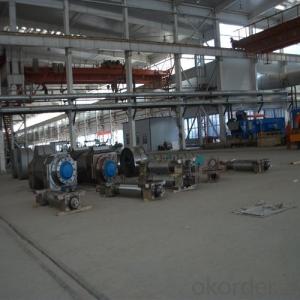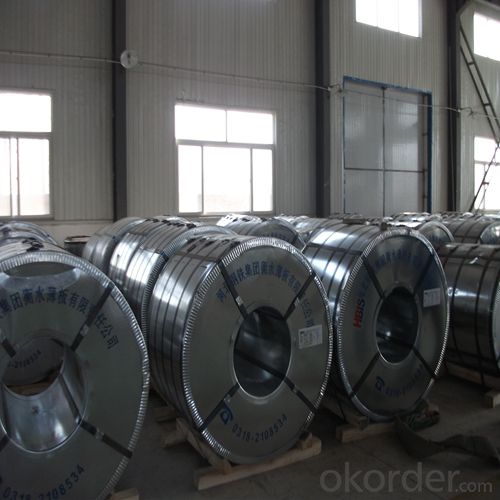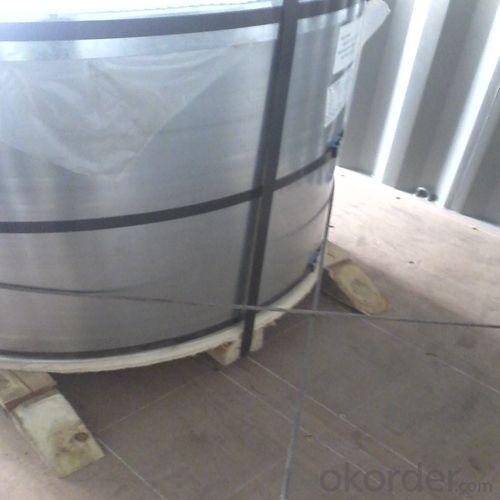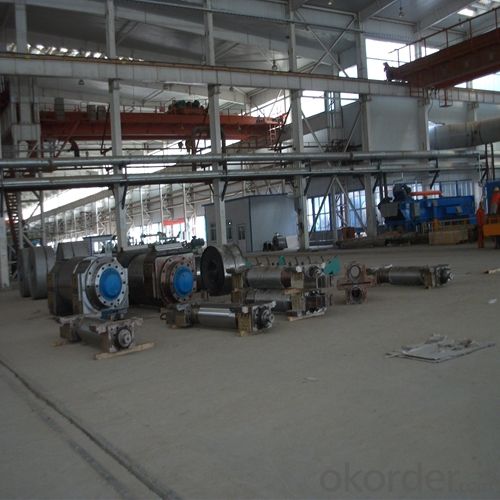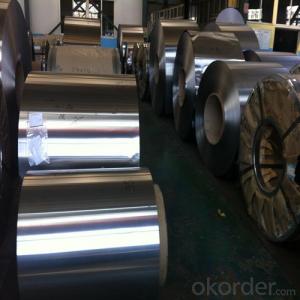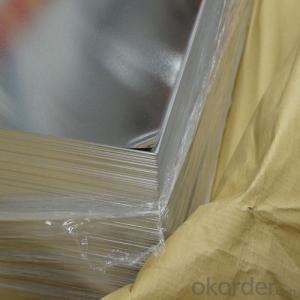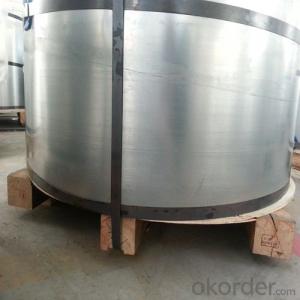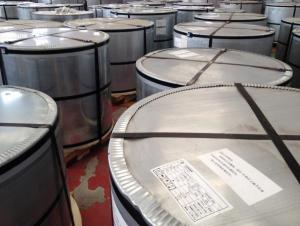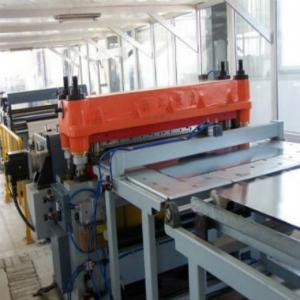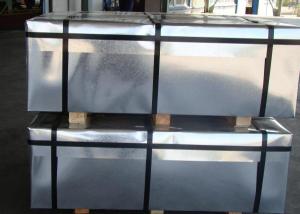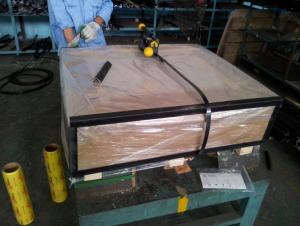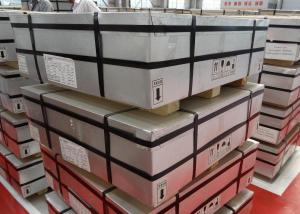Prime Quality Electrolytic Tinplate for Metal Container 0.21mm
- Loading Port:
- Shanghai
- Payment Terms:
- TT OR LC
- Min Order Qty:
- 50 m.t.
- Supply Capability:
- 15000 m.t./month
OKorder Service Pledge
OKorder Financial Service
You Might Also Like
1.Structure of Prime Quality Electrolytic Tinplate for Metal Container 0.21mm Description
Electrolytic Tinplate is a thin steel sheet coated by tin. It has an extremely beautiful metallic luster as well as excellent properties in corrosion resistance, solder ability, and weld ability.Its applications are not limited to containers; recently, tinplate has also been used for making electrical machinery parts and many other products.
2.Main Features of the Prime Quality Electrolytic Tinplate for Metal Container 0.21mm
Electrolytic Tinplate undoubtedly enjoys the pride of place as a packaging medium especially for food. It owes its unique position to its "nine layer sandwich structure", each of which contributes to its eminence as a packing material. The steel base of electrolytic tinplate provides the necessary strength and formability for can fabrication. The tin-iron alloy layer provides the bond between the steel and free tin layer. The free tin layer is not only responsible for the attractive bright finish and ease of solderability but is also non-toxic- a factor of vital importance in food packaging!
3.Prime Quality Electrolytic Tinplate for Metal Container 0.21mm Images
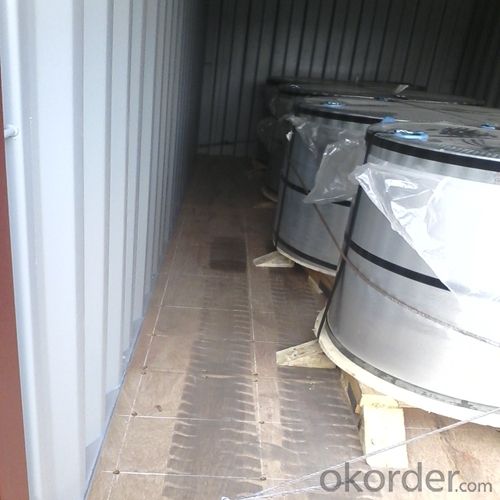
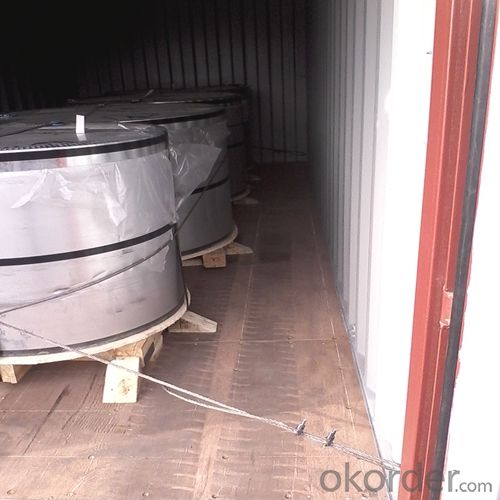
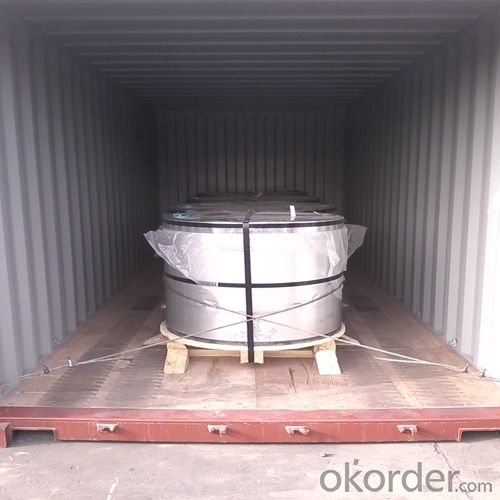
4.Prime Quality Electrolytic Tinplate for Metal Container 0.21mm Specification
Standard: ISO 11949 -1995
Material: MR
Thickness:0.21mm
Width: 1012mm
Temper:T4
Annealing:CA
Coil Inner Diameter: 508mm
Weight: 6-10 tons/coil 1~1.7 tons/sheets bundle
Passivation:311
Oil: DOS
Surface: matte
5.FAQ of Prime Quality Electrolytic Tinplate for Metal Container 0.21mm
1. What is the delivery time for your prime quality tinplate?
Usually 35 days after order confirmation.
2. What is your Minimum Order Quantity?
Usually MOQ is 50tons for one single size, for trial order, it can be 25 tons.
3. What is the payment term?
The most common we use is L/C at sight or TT. We can also try use other terms.
- Q: How is tinplate coated for paint cans?
- Tinplate is coated for paint cans through a process called electrolytic tin coating, where a thin layer of tin is applied to the surface of the steel sheet. This coating provides protection against corrosion and ensures the paint cans are suitable for storing various types of paints and coatings.
- Q: How do you solve the water stains on the tinplate?
- Feel the basin soil, if the surface is still felt humidity, can pinch the water, then it is necessary to take out the whole plant, breathable, basin soil slightly dry and then put back, half Yin conservation.
- Q: What are the common challenges faced in the production of tinplate?
- Some common challenges faced in the production of tinplate include ensuring consistent coating thickness, preventing defects such as pinholes and wrinkles, maintaining adhesion between the tin coating and base metal, controlling the formation of oxide layers, managing coil and strip handling to avoid damage, and ensuring efficient lubrication during forming processes.
- Q: How does tinplate contribute to the conductivity of electrical components?
- Tinplate contributes to the conductivity of electrical components by providing a thin layer of tin coating on the surface, which enhances the flow of electric current and reduces resistance. This tin coating acts as a protective barrier against corrosion, ensuring long-term conductivity and preventing the electrical components from deteriorating over time.
- Q: Can tinplate be used for packaging beverages?
- Yes, tinplate can be used for packaging beverages. Tinplate is a type of steel coated with tin, which provides excellent corrosion resistance and ensures the contents of the packaging remain safe and unaffected. It is commonly used for packaging beverages such as canned drinks, juices, and other liquid products as it prevents contamination, preserves freshness, and extends the shelf life of the product.
- Q: How does tinplate packaging contribute to reducing food waste?
- Tinplate packaging helps reduce food waste by providing a durable and protective barrier that extends the shelf life of food products. Its resistance to oxygen, light, and moisture helps prevent spoilage and maintains the freshness of food for longer periods. Additionally, tinplate packaging is 100% recyclable, promoting sustainable practices and reducing environmental impact.
- Q: What are the main applications of tinplate in the medical industry?
- Tinplate is commonly used in the medical industry for packaging purposes, specifically for storing and preserving medical devices, pharmaceutical products, and other sensitive healthcare items. Its corrosion resistance and ability to protect against contamination make it ideal for ensuring the safety and sterility of medical supplies. Additionally, tinplate's light weight and durability make it suitable for portable medical devices and portable packaging solutions.
- Q: What are the advantages of using tinplate for household appliances?
- There are several advantages of using tinplate for household appliances. Firstly, tinplate provides excellent corrosion resistance, which helps to protect appliances from rusting and prolongs their lifespan. Secondly, tinplate is lightweight yet strong, allowing for easy handling and transportation of appliances. Additionally, tinplate has a smooth and glossy surface, making it aesthetically pleasing and easy to clean. Lastly, tinplate is a sustainable and recyclable material, promoting environmental sustainability in the production and disposal of household appliances.
- Q: What are the advantages of using tinplate for promotional items?
- There are several advantages of using tinplate for promotional items. Firstly, tinplate is a durable material that can withstand wear and tear, making it ideal for long-lasting promotional products. Secondly, tinplate is highly customizable, allowing for various shapes, sizes, and designs to be created, enhancing the visual appeal of the promotional items. Additionally, tinplate can be easily printed on, enabling businesses to display their branding and messaging effectively. Lastly, tinplate is eco-friendly as it is recyclable, making it a sustainable choice for businesses concerned about their environmental impact.
- Q: Can tinplate packaging be used for pharmaceutical products?
- Yes, tinplate packaging can be used for pharmaceutical products. Tinplate is a commonly used material in the pharmaceutical industry due to its durability, corrosion resistance, and ability to protect products from light, moisture, and external contaminants. Additionally, tinplate packaging provides an excellent barrier to oxygen and maintains the quality and integrity of pharmaceutical products.
Send your message to us
Prime Quality Electrolytic Tinplate for Metal Container 0.21mm
- Loading Port:
- Shanghai
- Payment Terms:
- TT OR LC
- Min Order Qty:
- 50 m.t.
- Supply Capability:
- 15000 m.t./month
OKorder Service Pledge
OKorder Financial Service
Similar products
Hot products
Hot Searches
Related keywords
